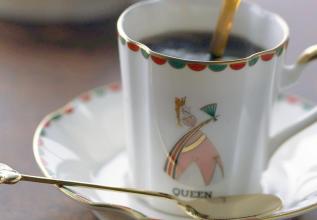Coffee Honey Coffee in Indonesia introduction to the flavor of West Java honey
a. Mechanical peeling (exocarp removal)
The early picking and flotation procedures are more or less the same as the water washing method, while the mechanical peeling process is quite different. The washing method requires the pulp to be removed to ensure its "cleanliness", while the mechanical peeling process of honey treatment can adjust the caliber of the peeling machine to determine how much pulp to remove. The whole is divided into three categories, as shown below (from left to right):
1. Coffee with more than 50% pulp removed is called "yellow honey" because the pulp is thin on the surface and yellowish brown after subsequent fermentation.
two。 If the coffee with less than 20% pulp is removed, the pulp on the surface is thicker, and the subsequent fermentation turns crimson, which is called "red honey".
3. Coffee, which hardly scrapes the flesh, is called "black honey" when it is fermented black.
b. Dry with pulp
At this time, the drying process is to put the shell beans with pulp directly on the drying rack or cement floor to dry for different days because of how much of the flesh is preserved (such as the picture above). Such as the sun method is similar, during the need to turn the coffee beans on time to avoid accumulation time is too long, resulting in excessive fermentation, easy to produce rotten flavor.
C. shelling (seed hulling & residual fermented pulp)
After drying, the water content of coffee beans can be reduced to 10%-12%. The purpose is to remove the seed shell and residual fermented pulp to produce raw beans.
Coffee Tips
It can be seen that the honey-treated coffee beans are not added with "honey", but the original flesh is preserved. Only through natural fermentation and absorbing the "positive energy" of full sunlight can they create a richer taste and a honey-like flavor.
Now the countries that use honey treatment / pulp solarization on a large scale are: Brazil, Costa Rica, Honduras, El Salvador and so on.
-the nagging dividing line of the editor-
Summer is as sweet as first love, one gram offers you a cup of honey-like Aimei coffee. Jackfruit, dried carambola. Countless tropical fruit aromas make you fall in love in the flower orchard!
Now, after discussing the three major treatments of coffee, it is not clear which treatment has the best flavor for coffee beans. They are all the process of turning coffee fruits into raw coffee beans, including peeling, pulp and pectin layer removal or retention, drying and other processors. All kinds of treatment methods are influenced by region, traditional habits or market demand, and they develop in the process of tradition and innovation.

Important Notice :
前街咖啡 FrontStreet Coffee has moved to new addredd:
FrontStreet Coffee Address: 315,Donghua East Road,GuangZhou
Tel:020 38364473
- Prev

Introduction to the description of the characteristics and flavor of the wet planing process of Indonesian Mantenin coffee beans
Manning's suffering will not upset you, but will make you feel more awake; before you encounter real pain, Manning is just an ordinary drink with a bitter taste, a refreshing liquid and a tool to slow you down. it can't sense your grievances, but there are many people who are crazy about Manning's.
- Next

Introduction to the producing areas of Jamaica Blue Mountain Coffee Flavor description, Grinding degree characteristics
There are three varieties of coffee in Jamaica: blue Mountain Coffee (Jamaica Blue Mountain Coffee), of which Blue Mountain Coffee and Alpine Coffee are each divided into four grades. From top to bottom in terms of quality, NO.1, NO.2, NO.3 and PB,PB are round beans. According to CIB standards, only coffee grown above 666m above sea level is called dental purchase.
Related
- Detailed explanation of Jadeite planting Land in Panamanian Jadeite Manor introduction to the grading system of Jadeite competitive bidding, Red bid, Green bid and Rose Summer
- Story of Coffee planting in Brenka region of Costa Rica Stonehenge Manor anaerobic heavy honey treatment of flavor mouth
- What's on the barrel of Blue Mountain Coffee beans?
- Can American coffee also pull flowers? How to use hot American style to pull out a good-looking pattern?
- Can you make a cold extract with coffee beans? What is the right proportion for cold-extracted coffee formula?
- Indonesian PWN Gold Mandrine Coffee Origin Features Flavor How to Chong? Mandolin coffee is American.
- A brief introduction to the flavor characteristics of Brazilian yellow bourbon coffee beans
- What is the effect of different water quality on the flavor of cold-extracted coffee? What kind of water is best for brewing coffee?
- Why do you think of Rose Summer whenever you mention Panamanian coffee?
- Introduction to the characteristics of authentic blue mountain coffee bean producing areas? What is the CIB Coffee Authority in Jamaica?

